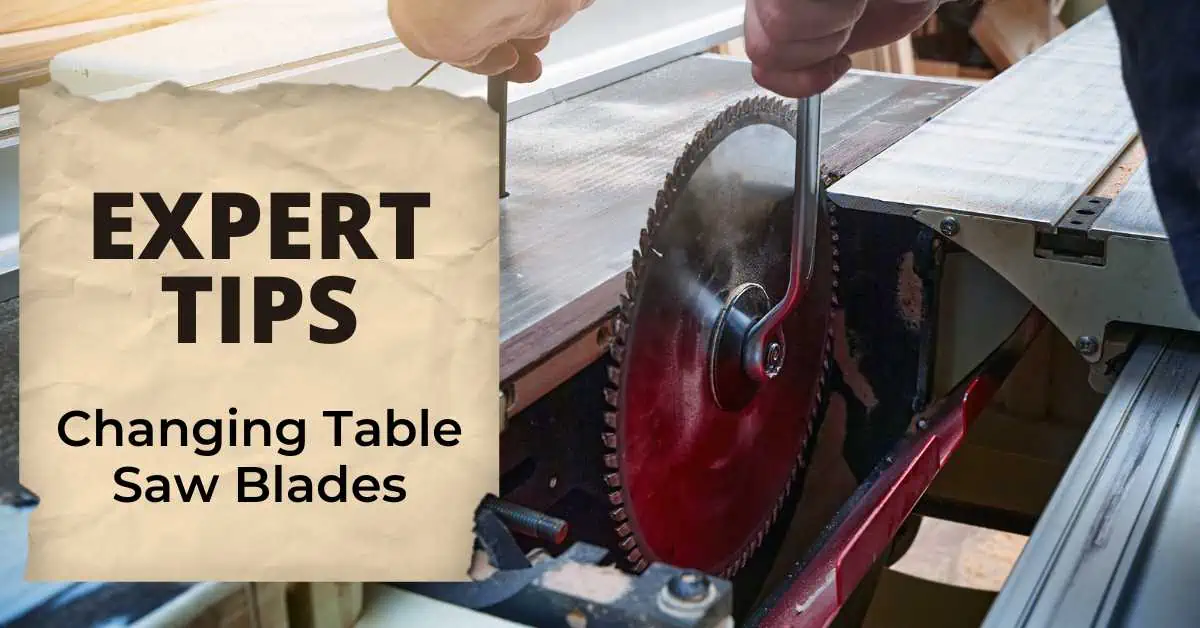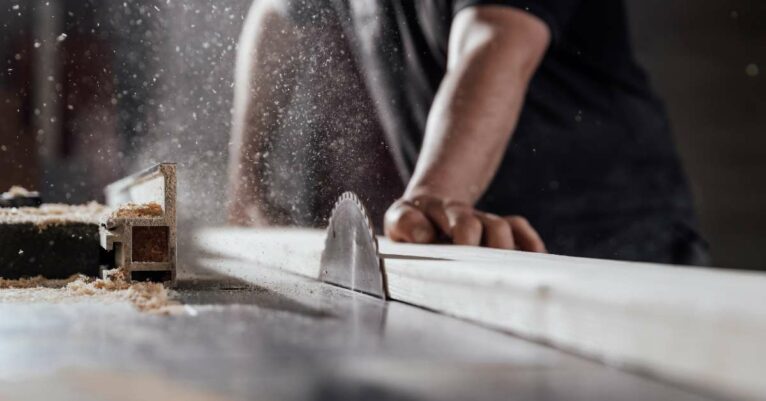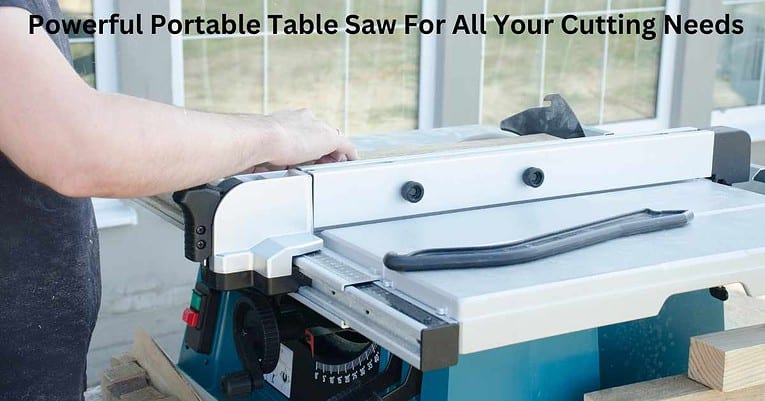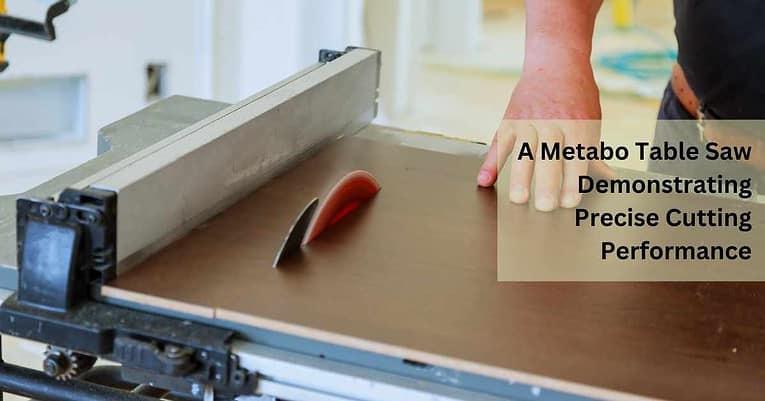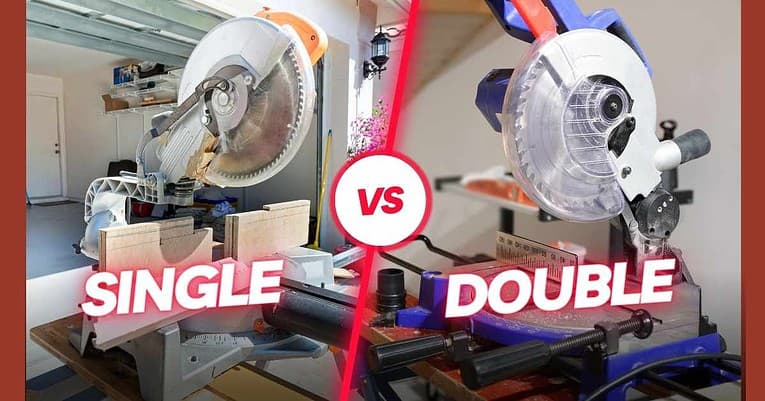How to Change Table Saw Blade: A Step-by-Step Guide
How to change Table Saw Blade?
Saw maintenance is an integral aspect of any woodworking project and learning how to change table saw blades can help ensure safety and accuracy, and extend your saw’s lifespan. With this guide, we will outline step-by-step instructions for changing a table saw blade as well as discuss necessary tools, provide helpful tips, cover signs that indicate a steady need for new blades, and more. This information not only helps ensure peak efficiency from your equipment but also contributes to safer use overall. So let’s get started by learning everything there is to know about switching out the table saw blades.
Safety Precautions
Before beginning the process of switching out your table saw blade, it is essential to take safety precautions. Table saws are very powerful tools and mishandling them can cause serious injuries to occur.
Firstly, always make sure the table saw is turned off and disconnected from any power source before maintenance work begins. This step cannot be overlooked as turning on a powered-on tool could lead to an accident that has hurting results. Under no circumstance should you attempt changing the blades while there is a current going through your equipment.
In addition, protective items like gloves and safety glasses are important to wear. Protective glasses would protect your eyes from any kicked-up dust that may occur when changing the blade. Working with some sort of hand protection can avoid scratches or cuts that might be caused by handling the blades themselves.
Thirdly, maintain an uncluttered workspace for your table saw. Get rid of any cluttered things around it in order to have a clear view of what you’re doing and reduce risks of tripping over something for example. To stay safe while swapping out blades on your saw always keep this area clean and tidy at all times.
By following these precautions, the environment where you change out a table saw blade should be secure during such activity; never forget that safety comes first especially when using power tools!
You may also like:
- The Ultimate Guide to Portable Table Saws: Top Picks and Reviews
- Table Saw Blade Sharpening 101: Everything You Need to Know
- Contractor Table Saws: Expert Recommendations and Reviews
- Precision and Power: Find the Right Table Saw Blades for Ripping Hardwood
Identifying When to Change Your Table Saw Blade

Knowing when to switch out your table saw blade is a key part of maintaining the efficiency of the tool and work quality. A blunt or damaged blade can lead to imprecise cuts, and rough edges, as well as heighten the risk of kickbacks in the process.
Alert signs that you may need to change your blades include:
- Greater difficulty when cutting materials– if you note an additional effort needed while pushing through wood it could signify that your blade is beginning to dull.
- Poor cuts – a sharp blade ideally would provide sleek smooth results with no snags on either end but if there are tears or irregular edges this might mean it’s time to replace them
- Burning and smoking – too much friction between wood and metal tends to give off burning fragments which implies that your blades may be too worn down already.
Familiarizing yourself with the various types of table saw blades is also essential. For instance, rip blades do best when cutting along wood grain and crosscut when cutting in an opposite direction, then you have combo blades that can go both ways. If changes between these are implemented it might be beneficial to switch out your blade accordingly especially if quality needs to be kept high.
Being aware of how your blade may need replacing frequently can really help maintain peak performance levels as well as almost double the life span for such power tools while maintaining top-notch results each time across all projects.
Tools Needed to Change a Table Saw Blade
When changing a table saw blade, having the proper tools on hand is helpful in producing an effective and safe result. The essential elements needed for this task would be:
Blade Wrenches– usually table saws come with two pairs of these specially created to turn the nuts that secure blades into place.
Screwdriver – when necessary to remove throat plates or guard covers based on design it could be either Phillips-head or flat-head.
Fresh Cutter-purchasing one adapted for cutting along the grain of the wood (rip) across (crosscut), or both according to need
Protective Gear– must not forget safety glasses and work gloves which offer protection for eyes and hands during the process.
Before going ahead with any maintenance steps make certain all the required items are ready close at hand—this will reduce time spent looking around as well as help maintain a more careful environment while performing such actions.
How to change table saw blade?
Step-by-Step Guide on Changing a Table Saw Blade
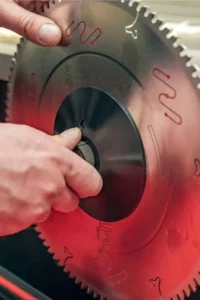
2. Removing the Old Table Saw Blade: Grab the blade wrenches to begin taking out old blades. Wrench 1 needs to hold it steady while the 2nd one is used for loosening the nut and should be turned in a counterclockwise direction. Afterward, remove antique cutters steadily with extra care given if possible.
3. Installing New Blade: Once completed, place new blades on the arbor making certain that their teeth are facing toward the front of the saw (this same rotational direction). Double-check they fit correctly by positioning them firmly in place properly first before anything else next is done.
4. Replacing Washer & Nut Back In Place: For the next step insert the new washer and nut again wherever it needs to go; afterward utilize the same pair of wrenches one for keeping still while the other does tightening. Extra caution is recommended when doing this part so as not to over-tighten because that could damage the blade or make them hard to remove during a later time period too.
5. Reinstallation of Blade Guard: With the new blades set in properly, afterward fit the guard again by reinstallation. Make certain correct alignment is used and secure with removed screws before moving on further. Verify the guard is being put back correctly as well without anything preventing its path from cutting freely.
6. Test Your Saw Once More: The last step would be to reattach the power source to the saw and then switching on in order for a final test which should showcase how it functions smoothly minus any strange noises added or wobbling happening anywhere throughout the process when done. For safety purposes stand aside whenever inspecting as an extra precautionary measure while using scrap wood pieces available if desired plus always unplugging first thing prior to starting blade changing activities.
Tips and Tricks for Changing Table Saw Blades
Changing a table saw blade could appear like a simple task however there are multiple tips available to make the entire procedure not just easier but safer too.
- Utilize a Block of Wood: In case it’s hard to maintain the cutter steady while wanting to unscrew the nut, think about shoving in a block of wood against the blade – this might lend support for keeping still and make removal easier than before.
- Tidy Up The Arbor: Since having access already you should take out any sawdust or resin that may be built up over the arbor (shaft which holds blades). Doing so could potentially remove any wobbling happening from time to time afterward as well as keep steadinesses during operations long term too.
- Not Overtightening Nut: When reinstalling the nut back on, double-check not applying an extra amount of force when tightening them since heightened pressure would wear down the blade faster than normal over duration plus complexity adjust/take off next round when performed again later on either way. The general rule is by hand tighten first with a turning wrench until ¼ turn is reached at most throughout the process if needed afterward even.
- Familiarize Self With Different Saws: Varying blades are made for different types of cuts–an example is rip is fashioned to go along with wood grain while crosscut performs the opposite way still. Understanding which approaches are best depending on desired results in advance could help reach higher optimal levels when finished too.
- Frequent Maintenance: Checkup often blades visually and clean if possible as dirtiness can decrease quality moreover strain the tool itself earlier than required without proper care done beforehand at times either way.
In short, success in getting through changing blades comes down to the patient and cautionary behavior always-never speeding ahead with the process because it could potentially backfire if done wrong plus remaining safe throughout the entire sequence by wearing protective items needed at all times as well.
Maintenance of Table Saw Blades

Maintaining table saw blades correctly is a necessity in order to extend tool life and potentially increase the standard of cuts during using such. Here are some tips to always remember when sustaining them appropriately:
Clean Blades: As time passes by, blades could become blocked due to sawdust and resin others too that might negatively impact not only performance but their lifespan when looking long-term. Doing some routine cleaning can help maintain cutters in upgraded versions so using either blade cleaner or warm water with light detergent plus a brush if necessary should do the trick here still. Make sure afterward they are completely dryer afterward otherwise rusting would soon begin happening without attentive care beforehand regarding this.
Sharpen Blade Whenever Necessary: Dull cutters aren’t just hard to push during usage but also hazardous at times which is drawing attention towards sharpening them routinely then. In cases where they have neither sustain any damage nor missing teeth diamond file/professional sharpening tools could work well for most after following company instructions too carefully.
Knowing When to Sharpen v.s Replace: On occasions, it might be time for replacing them as well which is why understanding when to use either or possibly both will do the trick. If looking at simple dullness in the blade then sharpening should suffice usually but if already reaching warped, chipped, and/or missing teeth levels would suggest a purchasing new cutter altogether and then following up by installing it back into the table saw still afterward.
Proper Storage: When not needing blades anymore they should be stored away in dry locations avoiding any moisture or accidental harm from happening at all. Plywood workers mostly favor specially crafted holders but even a cabinet/shelf free of dampness works fine for regular day-to-day protection when done accordingly then too.
By following these pointers, table saw blades could possibly better maintain their strong sharpness over a long-term basis with high-quality cutting performances along the route as well; always refer back to safety precautions prior to going ahead with maintenance steps though due to such tools involving potential risks during the process if handled wrong.
Conclusion
Changing and tending to table saw blades is a major aspect of woodworking, one that significantly affects both the work output as well as long-term durability of tools. Understanding when is appropriate timing for such activities while also knowing how best to go through it step by step offers improved overall performance with more accurate results each time plus doing so in a secure environment too ultimately.
Regular servicing within frameworks of cleanups and sharpening every now and then could extend the life span too for saw blades which is why advice on when to replace over-sharpening might be handy indeed. Although such an effort at first glance may feel intimidating, having the right tools plus adhering to the steps defined in the article should make it easier eventually regardless.
Prior beginning always keep safety at the forefront and never rush into it as a great amount of caution needs to be taken when dealing with power tools. Afterward, once blades are freshly sharpened or replaced you will have confidence in better performance levels plus improved work quality overall-setting yourself ready for more woodworking tasks without hesitation then.
FAQs
How often should I switch out my table saw blade?
Depending on the regularity of using the saw, the material type being processed and the overall quality of the blade itself, owners should consider making changes at certain points. In moments there is difficulty cutting or rough ends emerge with wood that’s burning plus smoking then it might be time to sharpen/replace the blade as soon as possible.
Can I personalize sharpening my own table saw blades?
It is plausible to do yourself when wanting such an action by utilizing diamond files or professional tools for maintaining standards either way. However, always remember to study the manufacturer’s instructions before getting started in order to avoid any potential harm and destruction throughout the process; if feeling less comfortable going through the steps refer to servicing expertly done instead too here still nevertheless.
How would rip & crosscut differ from each other for blades?
Typically, cutters used along wood grain would be known as rip featuring fewer amount of teeth in comparison to crosscuts which operate against the grains more showcasing greater sums at times. Difference normally comes down to how efficiently each type likely performs when tried out still although changes between them may stimulate the use of alternate blades during certain occasions too regardless then the way finally.
Regarding wobbling on the table saw blade?
Caused by many contributing factors like not positioning appropriately in the arbor, bent axle itself, or any hardened dirt accumulation either; if cleaning up blades and resituating it doesn’t solve matters then consulting with a professional may be needed according to particulars still anyway.
What might be recommended brands for table saw blades?
A lot of high-standard products are available today including Freud, Forrest, DeWalt, and Bosch–features would differ between them so ascertaining which works best is dependent upon specific needs plus budget at times also simultaneously too finally.
Remember that safety should always come first when handling tools like the abovementioned-or else peril can happen quickly so never feel pressured into amending things without complete knowledge already gathered together beforehand whenever possible as well. When unsure thinking about seeking help from somebody experienced before going through the steps could save time hence averting any mishaps happening later on across routes even either way eventually.
